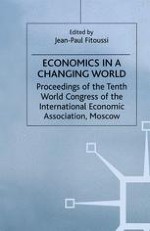1995 | Book
Economics in a Changing World
Volume 5 Economic Growth and Capital and Labour Markets
Editor: Professor Jean-Paul Fitoussi
Publisher: Palgrave Macmillan UK
Book Series : International Economic Association Series
Included in: Professional Book Archive
